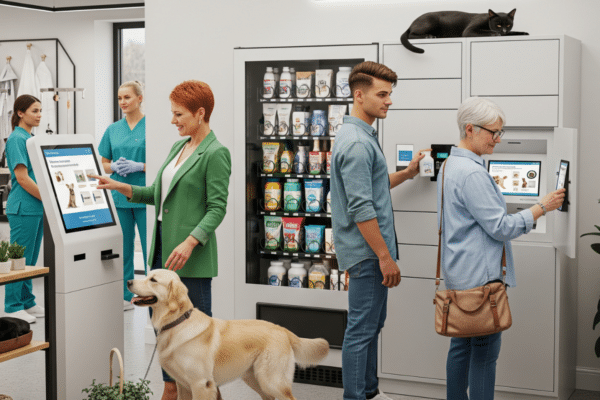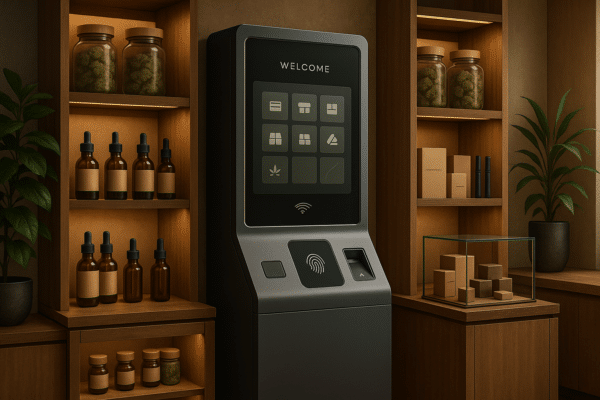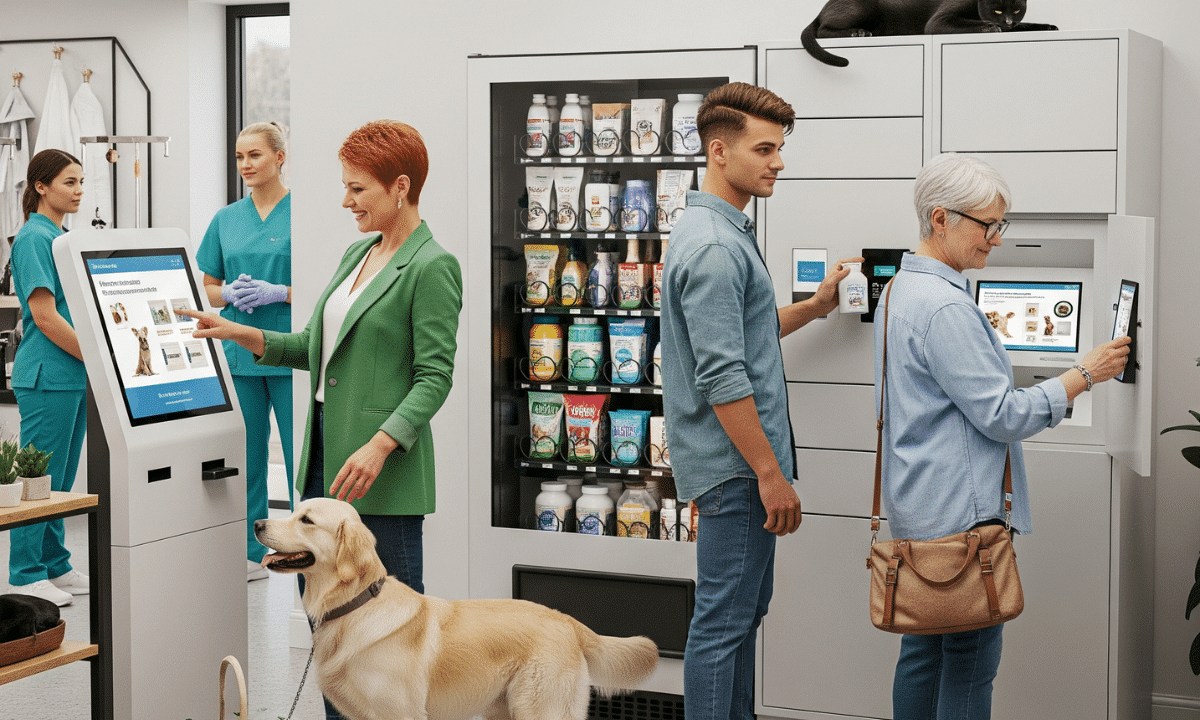
The Ultimate Guide to Merchandising Planning
The aisles of physical stores like your neighborhood grocery store or retail store reveal a carefully orchestrated plan. Each product sits strategically on the shelves, placed to catch the shopper’s eye. Bright sale signs tout limited-time deals, tempting shoppers to drop an extra item or two into their carts. This is the work of the unseen hand of the merchandise planner, whose meticulous planning and data-driven optimization are designed to maximize sales and profits.
Through sophisticated forecasting, brands compete for prime-shelf real estate. Robust analytics inform pricing strategies and promotional calendars. It’s far more complex than just stocking shelves. Retail merchandising is a high-stakes game where inches matter and psychology rules.
Is your grocery store or retail store layout leaving money on the table? With the right merchandising plan, your store could increase sales without adding inventory.
What is Merchandise Planning?
By definition, it’s the strategic approach to managing a business’s inventory to ensure the right products are available to customers at the right time. Essentially, this process involves forecasting sales and consumer demand, planning for season merchandise, general assortment planning, and supply chain management.
It is integral to create a successful balance between supply and demand, preventing any situation that a store risks running out of inventory or sitting on excess stock. The results are an improved customer experience, greater profitability, and improved overall business performance. The goal it to meet consumer demand as efficiently and seamlessly as possible.
Definition and Importance of Merchandising
In detail, merchandising involves making informed predictions about what customers will want to buy, deciding how much stock a business should carry, and strategizing where, how, and when the products should be available. It involves a myriad of elements such as supply chain management, model stock plan, assortment planning, demand forecasting, and fulfillment operations.
Effective merchandising allows a business to meet customers’ needs and manage inventory volume, utilize data effectively, promote products strategically, drive sales of a specific product, all to make the maximum profit. Without robust planning of merchandise, businesses risk losing sales due to out-of-stock items, missing potential profits due to overstocking, and failing to deliver a good customer experience.
Key Objectives of Merchandising Planning
The foremost objective is to ensure that the right quantities of the right products are available at the right place, at the right time, and at the right price. Simply put, it’s all about striking the perfect balance. Other key objectives include increasing efficiency, reducing the cost of sales, improving customer satisfaction, and enhancing profitability.
For instance, a model stock plan can be effectively used to determine the right amount and types of products to stock based on factors such as past sales numbers, market trends, and customer preferences. This balance is critical for maintaining a successful business.
Steps to Merchandising Planning
Success in merchandising relies heavily on a well-executed plan. Some vital steps include market research and analysis, assortment planning, demand forecasting, and strategic sourcing – all of which will be discussed below.
Market Research and Analysis
The merchandising planning process begins with a thorough market analysis. It involves a detailed examination of the market, including competitive analysis, customer behavior, average demand, product availability, prevailing market trends, and even predicting future market trends.
Comprehensive market research is crucial to ensure the retail business stays competitive and meets customer demands in a timely manner.
Assortment Planning
Once you have a clear understanding of the market, it’s time to work out your product assortment. This step involves deciding which products to sell, in what quantities, and when they should be made available to the customers. A well-thought-out plan ensures that the products in your inventory appeal to your customers, boosting sales effectively.
Being effective relies heavily on data. It’s about understanding your customers’ needs, preferences, buying behaviors and matching these aspects with your product availability.
Demand Forecasting
Demand forecasting is another critical aspect of the merchandising planning process. It involves predicting the level of customer demand in the future, leveraging crucial factors such as past sales, average demand, current market trends, and customer preferences. Demand forecasting is crucial in determining how much inventory you need and when. Accurate demand predictions empower businesses to manage inventory efficiently, reduce costs, and maximize profits.
Mastering Merchandise Planning in Retail Business

Factors Influencing Merchandising Planning
In retail, optimizing your merchandise planning process is key to meeting consumer demands, managing inventory levels, and managing the entire supply chain. But multiple factors affect the process. Let’s look at some of these influential factors.
Seasonality and Trends
Seasonality and emerging trends are crucial to merchandising. Monitoring sales data can provide insights into seasonal trends, allowing the retail business to prepare beforehand and adjust their season merchandise levels in the fulfillment center.
Consumer Behavior and Preferences
Consumer behavior and preferences largely guide product assortment. To execute effective merchandise planning, it is important to understand what the customer wants and align your product availability accordingly.
Competitive Analysis
A thorough competitive analysis can steer merchandise planning in the right direction. By understanding competitive strategies, you can develop a unique approach to planning merchandise and set your business apart.
Merchandising Planning Strategies
Category Management
Incorporating category management into your merchandising plan allows you to manage the product categories as separate business units, focusing more effectively on their performance.
Product Grouping and Placement
Product grouping and placement are vital to forecasting sales. Having a strategic store layout can significantly influence customer behavior and increase the odds customers will make a positive purchase decision.
Pricing and Promotions
Formulate a pricing and promotional strategy that aligns with season merchandise, market trends, sales figures, and other key performance metrics to help maintain a healthy inventory and attract more customers.
Inventory Management
Proper inventory management implies keeping track of goods, ensuring there’s enough stock to meet demand. This reduces the chances of overstocking or understocking.
Merchandise Assortment Optimization
Balance your core and trending products when developing your product mix. A focused assortment of products tailored to specific customer segments improves customer satisfaction and boosts revenue.
Understanding Customer Segments
One of the cardinal rules of merchandising planning is understanding your customer segments. Different groups have varying needs and preferences. Tailor your inventory to meet these specific requirements.
Supplier Collaboration
Strengthening your relationship with suppliers can significantly improve your supply chain management and retail operations. Good supplier relationships can lead to better deals, consistent product quality, and on-time deliveries.
Visual Merchandising
Visual merchandising is a powerful tool for retail businesses. It involves visual presentation and product displays that naturally entice the customers toward buying a specific product or products.
Sales Staff Training
Properly trained sales staff can make your merchandise strategy sing. Make sure your sales reps understand your merchandise plan and can pitch the products convincingly to target customers.
Merchandising Planning: Tools, Technologies, and Challenges
Tools and Technologies for Merchandising Planning
The advancement of technology has drastically transformed merchandise planning in the retail space. From automated data analytics to highly accurate sales forecast tools, a wide range of innovations have helped retailers manage their inventory levels efficiently.
Here we delve into some pivotal tools and technologies utilized in merchandise planning – merchandise planning systems, data analytics and forecasting, and Point-of-Sale systems.
Merchandise Planning Systems
Merchandise planning systems create and maintain a product assortment that ensures the right mix of products is on hand to meet buyer demand. An effective system employs data collected from various channels and helps to optimize the inventory management process, thereby reducing the chances of stockouts or overstock.
A stock plan created using these systems provides a roadmap for managing inventory levels, planning merchandise, facilitating smoother operations, and ensuring efficient resource allocation.
Data Analytics and Forecasting Software
Data analytics tools play a crucial role in merchandise planning. They process vast amounts of data to provide valuable insights regarding customer behavior, buying patterns, seasonal trends, and more. This intelligence aids in making data-driven decisions, improving overall sales, and enhancing the customer experience.
Forecasting software, on the other hand, uses historical data to predict future sales trends, helping retailers plan their inventory and sales strategies in advance. A sound sales forecast directly influences retail management, impacting everything from procurement to logistics.
Point of Sale (POS) Systems
POS Systems are more than just cash registers. They accumulate crucial data at the transaction level, providing real-time input on inventory levels, sales trends, customer preferences, and more. This data is imperative, helping to ensure retailers don’t miss out on sales opportunities due to poor inventory management.
Common Challenges in Merchandising Planning
Despite the various tools and technologies available, challenges persist in merchandising planning and analysis. Retailers often grapple with inventory management, pricing strategies, and constantly evolving consumer preferences.
Inventory Management and Stockouts
An efficient inventory management system forms the backbone of managing supply and demand. However, balancing inventory can be challenging. Overstocks lead to increased holding costs, and stockouts result in lost sales and customer dissatisfaction. Therefore, understanding the optimal level of stock for each product becomes crucial.
Pricing and Discounting Strategies
Setting the right price for products is a key aspect of merchandising planning. With the increasing competition in the retail industry, discounting strategies can often make or break a business. Thus, it’s essential to analyze market trends and competitive pricing by leveraging historical data to build a pricing strategy that doesn’t just optimize raw sales but also accounts for revenue increases.
Adapting to Changing Consumer Preferences
The retail industry is heavily impacted by changing consumer preferences. From sustainability to fast fashion, customer preferences can significantly alter the merchandise planning process. Keeping a pulse on consumer trends will help retailers adapt their strategies quickly and effectively.
Key Performance Indicators (KPIs) in Merchandise Planning
Merchandise planning plays a pivotal role in retail success. It’s the process that decides the ‘what, when, and how much’ in terms of product selection for retail stores. It’s this meticulous process that allows retailers to meet customer demands consistently, maintain optimal inventory, and maximize profits. However, making these important decisions requires a mixture of sales data, a model stock plan, and an assortment plan.
The crucial part of any merchandise planning process lies in the translation of strategic goals into actionable plans. Helping retailers in this translation are Key Performance Indicators or KPIs. One needs to consider these key metrics when planning merchandise to lay the foundation of a successful retail operation. Let’s delve into some of these important KPIs.
Sales and Revenue Analysis
Understanding sales performance is the backbone of merchandise planning. An in-depth sales and revenue analysis assists in formulating a precise sales forecast, which is essential for managing supply against demand. This sales information can be garnered across various channels, such as online sales, in-store sales, hybrid stores, and sales via other fulfillment centers.
Furthermore, a detailed revenue analysis can provide insights into customer preferences and shopping behaviors. This data proves useful in planning product assortment, indicating which specific products are performing well and which are underperforming. Consequently, retailers can make informed decisions, ensuring they carry the right stock that aligns with customer expectations and drives revenue.
Inventory Turnover Rate
Inventory turnover rate is another critical KPI in merchandise planning. This ratio indicates how many times inventory is sold and replaced during a given period. A high inventory turnover rate is usually a good sign that products are selling well. But, on the flip side, it could also mean that there isn’t enough stock to meet customer demand.
Understanding this KPI allows for effective inventory management. It enables retailers to strike the right balance in stocking inventory – not too much, leading to overstocks, or too little, resulting in stockouts. Combining insights from the inventory turnover rate with sales forecast data helps in maintaining optimal inventory, ensuring uninterrupted supply chain operations.
Gross Margin
The gross margin represents the total sales revenue minus the cost of goods sold. It’s a measure of profitability and is crucial to the merchandise planning process. Understanding the gross margin on products gives retailers an idea of the profits they can anticipate.
Through an effective assortment planning strategy, retailers can focus on products with higher gross margins, thus driving profitability. Bear in mind, though, a balanced plan must include a varying range of products, not just high-performing ones. It’s about ensuring that the merchandise mix caters to a wide variety of customer tastes and preferences, all while driving revenue and maintaining a healthy gross margin.
Conclusion
Understandably, the process of merchandise planning can seem overwhelming. However, by focusing on KPIs such as sales data, inventory turnover rate, and gross margin, retailers can decode the intricacies involved. These metrics provide significant insights, guiding the business toward sound decision-making and successful outcomes.








